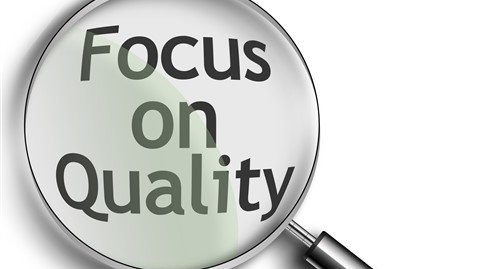
5 Easy Ways to Improve Translation Quality
You may be under pressure to complete localization projects quickly and cheaply, but as a result, the quality may end up suffering. It does take time and money to produce high-quality translations. If you’re entering new global markets or trying to maintain market share in your existing markets, translation quality can’t suffer or you might lose customers. However, you can take some steps to improve translation quality with your internal processes and your language service provider (LSP).
1. Write with Localization in Mind
If you approach a content development project knowing that the content will be translated, you can avoid costly or time-consuming issues during the localization process. There are many things you can do, such as developing writing standards, using consistent terminology, writing as clear and concisely as possible and standardizing the writing software (e.g., Microsoft Word, Adobe FrameMaker, Adobe InDesign, etc.). Your LSP can advise you on things that will help for translation, such as avoiding images with embedded text and concatenations.
The more time you spend developing and reviewing the English content, the higher the quality of the translated content will be. Every time you fix an error or clear up confusing content in the English, it will save the translators time in every language, which will improve the time to market and reduce your costs. So establish best writing practices (using a controlled language like can help) with your team, and most importantly, follow them!
2. Choose the Right Translators
Just as it’s important to have experienced, trained content developers, it’s also important to have the same requirements for your translators. The translators should be native speakers, preferably located in the target countries, and ideally have experience translating content in your industry, especially if you’re in a specialized field. When you initially start working with an LSP, it’s a good idea to train the team on your business and products or services. The more you can do up-front, the better for everyone. The quality will be higher and it will be less time-consuming once the project starts and the pressure is on. The translators are also an integral part of developing a glossary, which I’ll explain in the next section.
3. Create a Glossary of Terms
A glossary is a group of terms that are commonly used throughout content, such as terms related to an industry, a product, a service or business. Establishing a list of terms early on and working with your LSP to translate the terms increases consistency and saves time and money. It’s important to establish English terminology before a project begins so that the translators can translate the terms, which should ensure that they use the correct variation of the words. The terms will then be added to a translation memory (see the next section) to use during the project. As a translator works on a project, the approved terms are already pre-populated as they appear in the content.
4. Use a Translation Memory to Increase Consistency
A translation memory (TM) is a database of all the English and translated content. The TM keeps track of all the content from project to project. The glossary of terms is housed in the TM and all the translated content is pre-populated for a project. As you add more content, the library of translated content will continue to grow, which should ultimately decrease your translation cost and save the translators time. The TM helps with consistency as any sentence which was translated and approved in the past doesn’t have to be translated again, even if there’s a new translator. The TM and glossary together manage the consistency and both of these tools are essential in the localization process.
5. Include Proofreading / QA Cycles
Another very important step in the localization cycle is proofreading / QA. After the translators complete their work, QA experts need to make sure it passes QA tests and then the in-country reviewers need to validate the translation. For example, when translating software user interface terms, the translator doesn’t see the content in context so there may be errors. During the QA step, the testers review the content in context and fix any errors. Then the content goes to the in-country reviewers for another check. Just like with the English content, you must have different sets of eyes reviewing the translated content. The quality of the translation will increase by going through this step.
Conclusion
If you follow the tips in this blog post, you should be able to improve your translation quality. If you’re not sure how your translations are stacking up, we offer a translation quality assessment service that objectively looks at your content. Contact the nearest office to learn how our assessment can help you determine the actual quality of the translations. Join our LinkedIn Group Measuring Localization Quality to connect with other professionals who are interested in the topic.
Remember that if you go for cheap or quick translations, the quality will probably not be high. Quality isn’t cheap but it’s worth it.
[PS: I initially authored this article for the Net-Translators blog.]

Advisor at Cluboost Ltd.
7yglad you liked it! stay tuned, more to come ;-)
International SEO and AI Expert | SE Ranking Brand Ambassador | Digital Marketing Lecturer, University of Strasbourg | Inventor of Micro-SEO Strategies
7yGreat tips, Lee! Thanks for sharing.